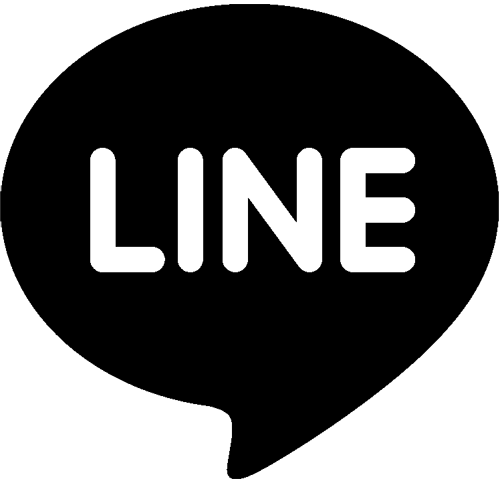▼ About ISO 14001—Environmental Management System with Persistent Management
The ISO 14001 standard aims to guide organizations in establishing and introducing integrated environmental management systems, including the selection of low-risk raw materials, the adoption of cleaner production technologies, and the production of green and environmentally-friendly products, as well as pollution prevention, The resource festival is used to continuously improve and maintain the quality of the organization's environment and achieve the goal of sustainable development of the company. Including the environmental management system, environmental audit, environmental performance assessment, environmental protection label (environmental appeals and declarations), life cycle assessment, wording and definitions, product standards, environmental considerations guidelines and other seven items.
▼ Tutoring Process
• Organizational assessment (environmental management, environmental audit, environmental performance assessment).
• Product Evaluation (Life Cycle Assessment, National Environmental Labels, Environmental Standards for Products).
• Materials (measure what sources of pollution are produced during production).
• Production Processes (measure what pollution sources are produced during production), (Verifiable Standards).
• Products (measuring whether the product itself meets environmental standards, use procedures, and will not produce hazardous waste after use).
▼ Span>ISO 14001:2015 new standard revision message
Normally international standards are reviewed every five years to ensure that standards meet the needs of existing industries. The ISO technical committee agreed that the ISO 14001 standard should be revised. One of the reasons is that since its last major revision, technology and business models have changed significantly. And companies that use multiple standards at the same time obviously need a common system to make implementation easier. The revised standard will be valid for 10 to 15 years.
The environmental management system must be part of a sustainable development and social responsibility policy. These systems help companies understand and improve their environmental performance to comply with laws and other important external regulations.
ISO 14001:2015 will help companies develop policies that promote environmental protection within their business. ISO 14001:2015 will strengthen the company's commitment to sustainable development and resource use, climate change and ecosystem protection. The revised standard will look at the environmental perspective from the perspective of the life cycle, and the identification and evaluation process will take into consideration the issues outside its direct control area. In the future, the environmental goals will consider both internal and external factors and be linked to one or more performance indicators.
▼ ISO 14001:2015 New Revision Highlights
• Chapter 4: Organizational background. This is a new article that provides a better and more strategic explanation of all factors that influence the way in which environmental responsibility is managed. For example: climate, resource acquisition and social, regulatory, financial and technological changes.
• Chapter 5: The importance of leadership to ensure that the top management of the company has more commitment, responsiveness, active support, and feedback.
• Chapter 6: Planning will cover the concept of preventive measures. It is more appropriate here than in the current section on "Part of the action". This article will focus on environmental awareness and capabilities.
• Chapter VII: The specification of support has not changed and consistency will become more explicit. For example, asking for mutual communication. The part originally covered in the "Future Pick" War has been modified to make all communication more transparent, appropriate and reliable.
• Chapter VIII: Operations, more emphasis on the concept of "value chain" affecting environmental management systems, and examine how the company controls changes and the specific flow of outsourcing The process.
• Chapter IX: Performance Evaluation is a new article that incorporates some of the terms of the original version including supervision and measurement, and management review. It is expected to help help the company to collect proper records internally and prove that its environmental management system meets the company's business goals.
• Chapter 10: Improvement, will become more structured. Although it retains the principles of existing non-compliance and corrective actions, the new standard is more detailed in the context of the non-compliance and required actions under consideration. Provisions.
▼ About ISO 14001—Environmental Management System with Persistent Management
The ISO 14001 standard aims to guide organizations in establishing and introducing integrated environmental management systems, including the selection of low-risk raw materials, the adoption of cleaner production technologies, and the production of green and environmentally-friendly products, as well as pollution prevention, The resource festival is used to continuously improve and maintain the quality of the organization's environment and achieve the goal of sustainable development of the company. Including the environmental management system, environmental audit, environmental performance assessment, environmental protection label (environmental appeals and declarations), life cycle assessment, wording and definitions, product standards, environmental considerations guidelines and other seven items.
▼ Tutoring Process
• Organizational assessment (environmental management, environmental audit, environmental performance assessment).
• Product Evaluation (Life Cycle Assessment, National Environmental Labels, Environmental Standards for Products).
• Materials (measure what sources of pollution are produced during production).
• Production Processes (measure what pollution sources are produced during production), (Verifiable Standards).
• Products (measuring whether the product itself meets environmental standards, use procedures, and will not produce hazardous waste after use).
▼ Span>ISO 14001:2015 new standard revision message
Normally international standards are reviewed every five years to ensure that standards meet the needs of existing industries. The ISO technical committee agreed that the ISO 14001 standard should be revised. One of the reasons is that since its last major revision, technology and business models have changed significantly. And companies that use multiple standards at the same time obviously need a common system to make implementation easier. The revised standard will be valid for 10 to 15 years.
The environmental management system must be part of a sustainable development and social responsibility policy. These systems help companies understand and improve their environmental performance to comply with laws and other important external regulations.
ISO 14001:2015 will help companies develop policies that promote environmental protection within their business. ISO 14001:2015 will strengthen the company's commitment to sustainable development and resource use, climate change and ecosystem protection. The revised standard will look at the environmental perspective from the perspective of the life cycle, and the identification and evaluation process will take into consideration the issues outside its direct control area. In the future, the environmental goals will consider both internal and external factors and be linked to one or more performance indicators.
▼ ISO 14001:2015 New Revision Highlights
• Chapter 4: Organizational background. This is a new article that provides a better and more strategic explanation of all factors that influence the way in which environmental responsibility is managed. For example: climate, resource acquisition and social, regulatory, financial and technological changes.
• Chapter 5: The importance of leadership to ensure that the top management of the company has more commitment, responsiveness, active support, and feedback.
• Chapter 6: Planning will cover the concept of preventive measures. It is more appropriate here than in the current section on "Part of the action". This article will focus on environmental awareness and capabilities.
• Chapter VII: The specification of support has not changed and consistency will become more explicit. For example, asking for mutual communication. The part originally covered in the "Future Pick" War has been modified to make all communication more transparent, appropriate and reliable.
• Chapter VIII: Operations, more emphasis on the concept of "value chain" affecting environmental management systems, and examine how the company controls changes and the specific flow of outsourcing The process.
• Chapter IX: Performance Evaluation is a new article that incorporates some of the terms of the original version including supervision and measurement, and management review. It is expected to help help the company to collect proper records internally and prove that its environmental management system meets the company's business goals.
• Chapter 10: Improvement, will become more structured. Although it retains the principles of existing non-compliance and corrective actions, the new standard is more detailed in the context of the non-compliance and required actions under consideration. Provisions.













